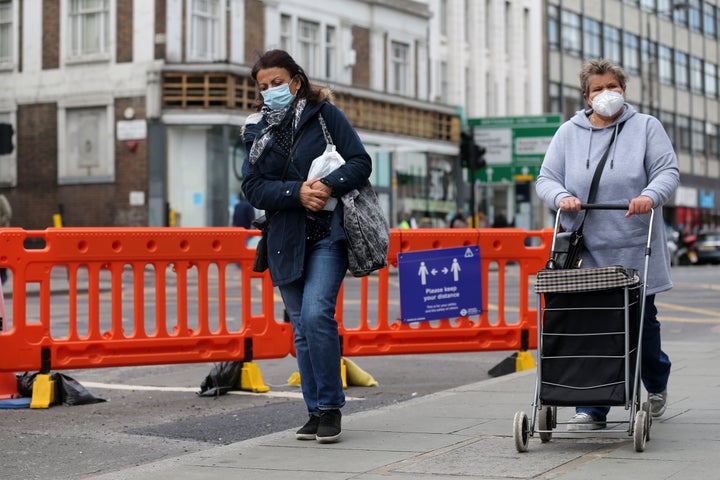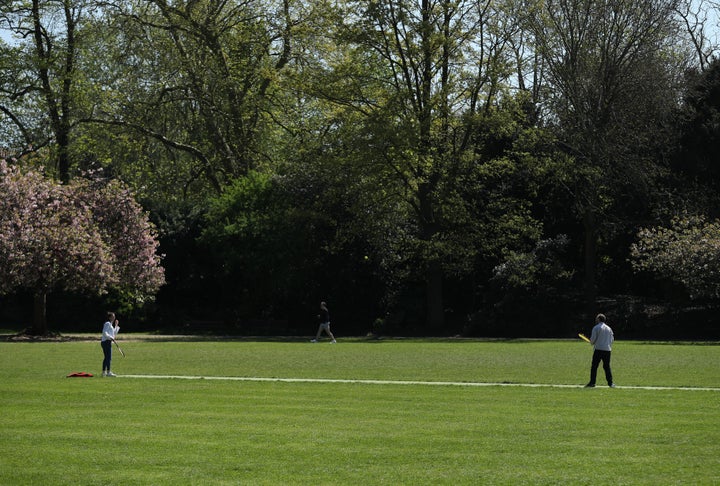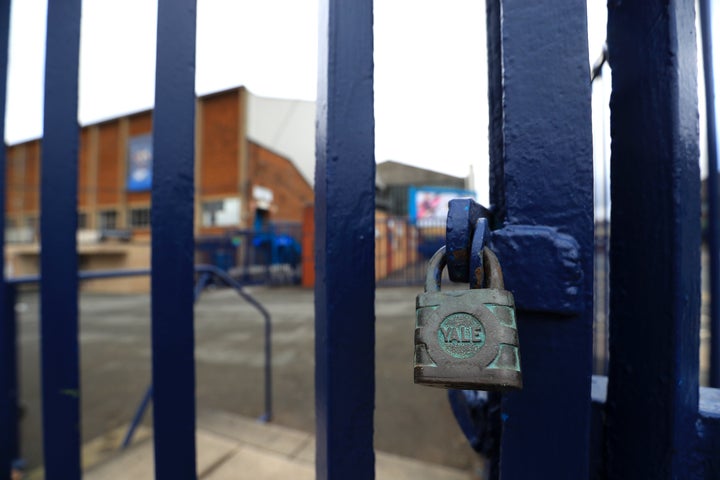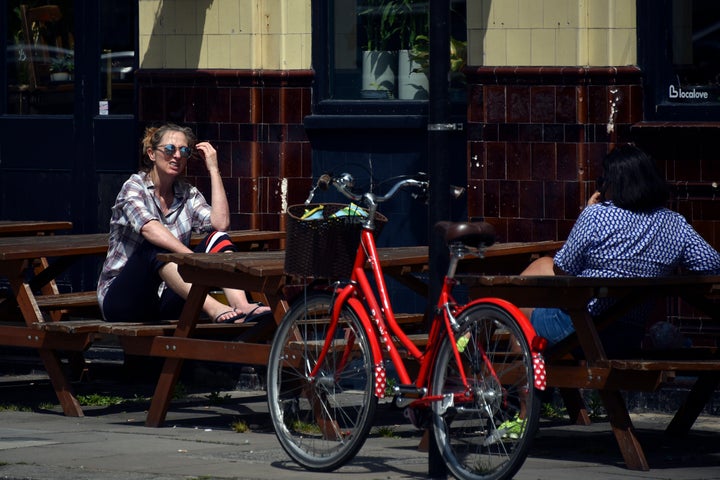Coronavirus has changed everything. Make sense of it all with the Waugh Zone, our evening politics briefing. Sign up now.
Confusion has reigned since Boris Johnson announced a three-stage plan to begin lifting the coronavirus lockdown on Sunday night.
But the government has now published its 51-page “plan to rebuild” that many are hoping will provide more clarity.
In the foreword, the prime minister makes clear it is “not a quick return to ‘normality’” but that it should give people “hope that we can rebuild; hope that we can save lives; hope that we can safeguard livelihoods”.
Johnson however warned that a vaccine or treatment may be more than a year away, or may not be produced at all, and so a plan must be put in place for “the long haul”.
“I know the current arrangements do not provide an enduring solution – the price is too heavy, to our national way of life, to our society, to our economy, indeed to our long-term public health,” he said.
“So this plan seeks to return life to as close to normal as possible, for as many people as possible, as fast and fairly as possible.”
The backdrop to the plan is that there are now no regions where the epidemic is increasing, but an estimated 136,000 people in England are infected with Covid-19.
Among the headline measures are the return of childcare, the ability to meet up with people from outside of your household on a very limited basis, and an encouragement for broad sections of workers to return to work.
Here is what the document says about the new relaxing and tightening of restrictions:
Step one, from Wednesday, May 13

Work: Workers who can should continue to work from home. But all those who cannot work from home should travel to work, including those in food production, construction, manufacturing, logistics, distribution and scientific research in laboratories.
“The only exceptions to this are those workplaces such as hospitality and non-essential retail which, during this first step, the government is requiring to remain closed,” the paper states.
Workplaces should follow new “Covid-19 secure” guidelines which the government published separately on Monday night.
They advise employers to redesign work spaces to allow for two-metre social distancing, including through staggered start times, one-way systems, opening more entrances and exits, and changing break room seating layouts.
When workers cannot be two metres apart, employers should look into barriers in shared spaces, creating workplace shift patterns or fixed teams minimising the number of people in contact, or ensuring colleagues are facing away from each other.
Workplaces should also be cleaned more frequently, with close attention paid to high-contact objects like door handles and keyboards, while hand-washing facilities or hand sanitisers should be provided in doorways.
Employers must also carry out a Covid-19 risk assessment in consultation with workers or unions to establish what guidelines to put in place.
Anyone with coronavirus symptoms must still self-isolate.
School: Councils and schools should encourage more vulnerable children and children of key workers to attend school, as only 2% of children are now doing so.
Paid childcare, including nannies and childminders, can now take place as long as it can meet the public health principles set out in the document “because these are roles where working from home is not possible.
“This should enable more working parents to return to work,” it says.
Travel: Everyone, including critical workers, should continue to avoid public transport where possible, instead choosing to cycle, walk or drive.
The government will boost funding and provide new guidance to encourage councils to widen pavements, create pop-up cycle lanes and close some roads in cities to traffic, apart from buses.
Social distancing on public transport “must be followed rigorously”.
All international arrivals will be asked to self-isolate for 14 days, supply their contact and accommodation information, and strongly advised to download the NHS contact tracing app.
If they cannot demonstrate where they will self isolate they will be placed into government quarantine accommodation.

Face coverings: People should aim to wear face coverings where social distancing is not always possible, for example on public transport and in some shops.
Home-made cloth coverings are fine. They do not protect the wearer, but prevent the wearer passing on the virus if they are asymptomatic.
People are urged not to use surgical face masks or respirators as they must be reserved for health and other workers who need personal protective equipment (PPE).
Children under two should not use face coverings or those who may find it difficult to manage them such as unassisted primary school children or those with respiratory conditions.
People must wash their hands before putting or taking off their face covering.
Public spaces and meeting others: People can meet up with one person from outside their own household outdoors, and it must be at a distance of two metres.
Personal trainers will also be able to do one-on-one sessions with clients in parks, Downing Street confirmed.
People can exercise outdoors as many times a day as they want. This will include sport where social distancing is possible, such as golf, angling, and tennis. Officials confirmed this also includes basketball.
But team sports, playgrounds, outdoor gyms or ticketed outdoor leisure venues are still prohibited.
People can drive to outdoor open spaces at any distance away as long as they observe social distancing guidance. They cannot travel from England to Scotland, Wales or Northern Ireland if it is inconsistent with the guidance in those nations.
The plan states: “These measures may come with some risk; it is important that everyone continues to act responsibly, as the large majority have done to date. The infection rate will increase if people begin to break these rules and, for example, mix in groups in parks, which will trigger the need for further restrictions.”
Johnson’s official spokesperson explained: “You could go to the park with a whole household for leisure, not just exercise, for a picnic, sunbathing.
“Alternatively if just you went out on your own you could meet one other person not from your household in the park provided they sit two metres away from you.
“What you can’t do is combine those two things.”
People will be permitted to play sport with people from outside their household, such as tennis or golf, as long as they observe the social distancing rules.
“People will have to apply common sense to this,” the spokesperson said.

Vulnerable groups: Those aged over 70 and with specific chronic conditions and pregnant women should continue to minimise contact with others “but do not need to be shielded”.
But those in the extremely vulnerable group are “strongly advised to stay at home at all times and avoid any face-to-face contact”, in a continuation of shielding.
The document suggests that in the future others may be released from lockdown while the most vulnerable are still asked to shield, “deepening” the challenge facing them.
Enforcement: The government will impose higher fines on those breaching the rules and is considering other more stringent measures.
Parliament: The government wants parliament to set a “national example” of the new normal and move towards more physical proceedings in the Commons.
Summing up phase one, chief medical officer Chris Whitty said: “We are confident that these quite small changes on their own will not have a material effect, provided the social distancing and the rules are there, on increasing R (the rate of spread of the virus.”
Step two from June 1 at the earliest
Providing the five tests for lifting the lockdown justify more easing of restrictions, there will be:
A phased return for early years education and schools: Early years, reception, year 1 and year 6 children will be back in school in smaller classes from this point.
Secondary schools and colleges should also prepare for face-to-face contact with year 10 and 12 pupils who have GCSE and A-Level exams next year.
The government aims to return all primary school children to school for a month before summer but this will be kept under review.
It is understood that ministers expect class sizes will be cut in half in this period, by using spare capacity freed up by only allowing half the school year groups to return.
Asked if parents will be forced to send their children back to school, the PM’s official spokesman said: “While we will not penalise parents for keeping children at home, once children are eligible for return to school we will strongly encourage them to do so.”
It will be up to individual school heads to arrange their working, once fuller guidance has been issued by the Department of Education.
Asked about the prospect that some teachers may refuse to work, chief medical officer Whitty said his “medical answer” would be that teachers with ‘shielded’ illnesses should stay at home, while those in ‘vulnerable’ groups like pregnant women, could do some “non-pupil facing roles” like lesson planning at home.
But those exceptions did not extend “to people who actually don’t have those vulnerabilities” he added.
Opening non-essential retail: This will happen in phases from June 1. Hospitality and personal care like hairdressers nail salons will not be able to open at this point.
Behind closed doors sport and culture: Premier League football could be back on TV screens from June.

Re-opening more local public transport: Subject to strict measures to limit the spread of the virus.
Potentially more contact with others: Scientists on the government’s Sage committee have been asked to look at whether, when and how the rules can be changed to allow one household to expand its social group to include one other household exclusively in a “bubble”.
The government is also examining how to enable people to gather in slightly larger groups to better facilitate small weddings.
The government’s chief scientific adviser Sir Patrick Vallance said: “We will look at the question about households linking, which is a complicated question, and has the theoretical risk of reconnecting households with quite long connection chains and so that needs to be looked at extremely carefully. We will look at it, it’s not straightforward at all.”
Step three from July 4 at the earliest

The government hopes to:
Open some businesses and spaces that are still locked down: This could include pubs, restaurants, hotels, hairdressers, beauty salons, cinemas and places of worship.
Venues which are crowded by design and where it is difficult to operate social distancing may still not be able to safely reopen, or may only be able to partially reopen.
“Nevertheless the government will wish to open as many businesses and public places as the data and information at the time allows,” the document states.
There will also be pilots of higher-risk businesses and public spaces to test their ability to adopt Covid-19 secure guidelines.
